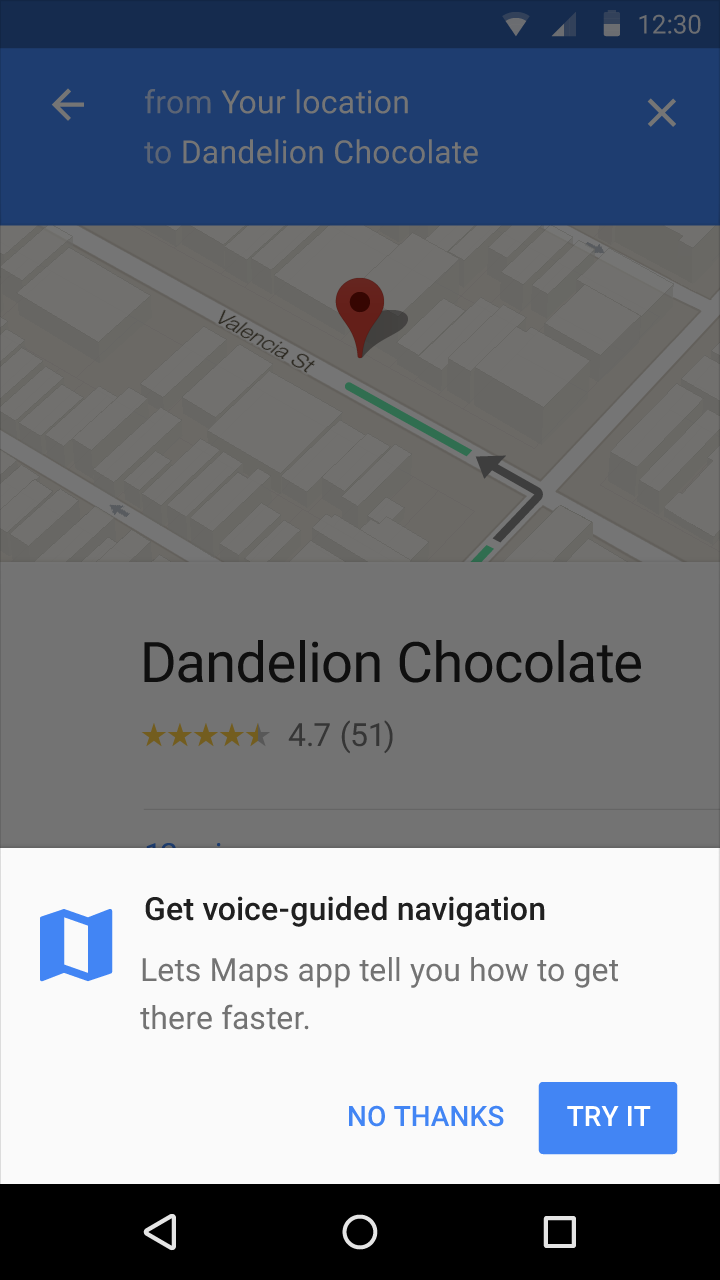대부분의 앱이 제대로 작동하려면 사용자가 앱에 특정 앱 권한을 부여해야 합니다. 그러나 다음과 같은 일부 경우에 사용자가 권한을 부여하지 않을 수 있습니다.
- 사용자가 앱의 핵심 기능에 권한이 필요하지 않다고 생각합니다.
- 사용자가 권한과 연결된 기능을 사용하지 않습니다.
- 사용자가 권한이 기기 성능에 미치는 영향을 우려하고 있습니다.
- 사용자가 예를 들어 개인 정보 보호에 민감하여 불편함을 느낍니다.
Android vitals를 사용하여 사용자 인식 측정 {#:android-vitals}
Android vitals는 앱에서 수신하는 권한 거부율을 알려 사용자의 개인 정보 보호 환경설정과 참여도를 측정하는 데 도움이 될 수 있습니다. Android vitals는 Play Console을 통해 사용자가 앱 권한을 거부한 일일 권한 세션의 비율을 보여줍니다.
일일 권한 세션이란 앱에서 사용자에게 1번 이상 권한을 요청한 1일을 의미합니다. 지정된 사용자가 동일한 권한에 관해 결정을 여러 번 내려야 하는 경우 세션 종료 시 마지막으로 내린 결정만 기록됩니다.
Android vitals는 권한 그룹 수준에서 사용자의 결정을 보여줍니다. 또한 Android vitals는 동일한 Play 스토어 카테고리의 다른 인기 앱과 비교하여 앱의 수준을 파악하는 데 도움이 되는 벤치마크를 제공합니다. Google Play에서 Android vitals 데이터를 수집하는 방법에 관한 자세한 내용은 Play Console 문서를 참고하세요.
권장사항
비정상적으로 높은 거부율은 사용자가 자신의 정보를 추가로 노출할 때 그 대가로 제공되는 혜택이 가치가 있다고 생각하지 않는다는 것을 의미합니다. 사용자가 앱을 더 편안하게 사용하도록 하는 방법에는 여러 가지가 있습니다. 이 섹션에 설명된 것과 같은 단계를 취하면 거부율을 줄일 수 있습니다. 하지만 사용자의 개인 환경설정이 다양하고 일부 사용자는 어떠한 경우에도 권한을 부여하지 않으려고 하므로 거부율을 0으로 만들 수는 없습니다.
불필요한 권한 요청 피하기
연구에 따르면 사용자는 더 적은 권한을 요청하는 앱을 선호합니다. 권한 요청을 필요한 최소 세트로 유지하면 앱에 관한 사용자의 신뢰도를 높이고 더 많은 설치를 유도할 수 있습니다. 반대로 불필요한 권한 요청을 추가하면 Play 스토어에서의 앱 공개 상태에 부정적인 영향을 줄 수 있습니다. 특정 권한이 필요하지 않은 경우 다른 방법을 통해 앱의 권한 요청 수를 줄일 수 있습니다. 몇 가지 일반적인 접근 방식이 앱 권한 권장사항에 설명되어 있습니다.
컨텍스트에 따라 권한 요청 표시
덜 직관적인 중요하지 않은 권한은 컨텍스트에 따라 설명하면 도움이 될 수 있습니다. 이렇게 하면 권한에서 파생된 값에 관한 사용자의 이해도가 높아집니다. 그림 1은 컨텍스트에 따라 사용자를 교육하는 예를 보여줍니다.

그림 1. 컨텍스트에 따라 권한 요청 설명
앱이 관련 기능의 컨텍스트에 따라 권한을 요청하면 사용자가 가치 제안을 더 잘 이해합니다. 이와 같이 이해도가 향상되면 더 많은 사용자가 권한 요청을 승인하게 될 수 있습니다.
사용자 교육 및 권한 요청 방법에 도움이 되는 가이드라인에 관한 자세한 내용은 권한의 Material Design 패턴을 참고하세요.
앱에 권한이 필요한 이유 설명
컨텍스트에 따라 권한을 요청하여 시작해 보세요. 덜 직관적인 권한의 설명을 제공하면 권한에 관한 사용자의 이해도를 향상하는 데 도움이 됩니다. 사용자가 이전에 요청을 거부한 경우 shouldShowRequestPermissionRationale() 유틸리티 메서드가 true를 반환합니다. 앱에서 이 메서드를 사용하여 설명을 표시할 시기를 정할 수 있습니다.
앱 권한 요청에서 설명 문자열을 표시하는 방법을 자세히 알아볼 수 있습니다.

